- News
- Reviews
- Bikes
- Accessories
- Accessories - misc
- Computer mounts
- Bags
- Bar ends
- Bike bags & cases
- Bottle cages
- Bottles
- Cameras
- Car racks
- Child seats
- Computers
- Glasses
- GPS units
- Helmets
- Lights - front
- Lights - rear
- Lights - sets
- Locks
- Mirrors
- Mudguards
- Racks
- Pumps & CO2 inflators
- Puncture kits
- Reflectives
- Smart watches
- Stands and racks
- Trailers
- Clothing
- Components
- Bar tape & grips
- Bottom brackets
- Brake & gear cables
- Brake & STI levers
- Brake pads & spares
- Brakes
- Cassettes & freewheels
- Chains
- Chainsets & chainrings
- Derailleurs - front
- Derailleurs - rear
- Forks
- Gear levers & shifters
- Groupsets
- Handlebars & extensions
- Headsets
- Hubs
- Inner tubes
- Pedals
- Quick releases & skewers
- Saddles
- Seatposts
- Stems
- Wheels
- Tyres
- Health, fitness and nutrition
- Tools and workshop
- Miscellaneous
- Cross country mountain bikes
- Tubeless valves
- Buyers Guides
- Features
- Forum
- Recommends
- Podcast
£1,850.00
VERDICT:
The new version of a road.cc favourite rides just as well as the original
Weight:
2,100g
Contact:
At road.cc every product is thoroughly tested for as long as it takes to get a proper insight into how well it works. Our reviewers are experienced cyclists that we trust to be objective. While we strive to ensure that opinions expressed are backed up by facts, reviews are by their nature an informed opinion, not a definitive verdict. We don't intentionally try to break anything (except locks) but we do try to look for weak points in any design. The overall score is not just an average of the other scores: it reflects both a product's function and value – with value determined by how a product compares with items of similar spec, quality, and price.
What the road.cc scores meanGood scores are more common than bad, because fortunately good products are more common than bad.
- Exceptional
- Excellent
- Very Good
- Good
- Quite good
- Average
- Not so good
- Poor
- Bad
- Appalling
The new Kinesis ATR V2 carries on from where the original ATR left off. It's a brilliant multi-purpose frameset that's been updated since its first incarnation to follow the trends in gravel bikes as they've evolved. As such, it's a bit more towards the bikepacking end of the drop-bar spectrum than the first bike was, with a stronger frame, bigger capacity for wide tyres and a slightly tweaked geometry. None of the changes have really affected its prowess as a road bike, though, and it's still a superb basis for a mile-eating tarmac-based bike too.
- Pros: The same great ride feel as the original bike, more verastile and off-road ready without sacrificing tarmac performance
- Cons: A lot more expensive than the ATR V1, internal cable routing wouldn't be my choice
The ride: composed, comfortable, fun
ATR stands for 'adventure, tour and race', and as I noted above we reviewed the original ATR back in 2014. The original bike was one of the early breed of new gravel bikes coming on the scene, and it did really well: it was our frameset of the year that year, and I liked it so much that I bought our test frame.
> Find your nearest dealer here
It's the bike I ride most: fast enough to keep up on club runs, and comfortable enough for longer rides than I can manage. It's capable off-road, too, and pretty light to boot built up with a 1x drivetrain. I love it. It's a gem.
So of course, when I first hopped aboard the V2 bike the first thought I had was, 'I hope they haven't bollocksed it up'. And they haven't. So that's good.
The ATR V2 shares more than a passing family resemblance to the original in terms of ride. And that's a good thing, because that bike was hard to beat in terms of long-distance ride comfort. The bike is fairly upright: the 60cm version I'm riding has a 210mm head tube and a 585mm effective top tube. The stack-to-reach ratio is 1.6, which is very upright for a road bike; it's noticeably taller than most endurance bikes you'll ride.
That rangy geometry doesn't make for a vague frame, though: the ATR V2 feels crisp and springy, like a good titanium bike should. It's comfortable and engaging, with good feedback to the rider without any jarring.
I used the ATR V2 with two different wheelsets, in two sizes, because you can. The old ATR could take some decent sized tyres; the stated limit was 40mm on a 700C rim but I squeezed 42mm Surly Knards in just fine. The V2 bike has increased that to 45mm, or 40mm with mudguards, but it's also designed to work with 650B wheels. This is a very old standard, of course, but it wasn't really on the radar when the original frameset was released. Now it's everywhere, and tyre choices are expanding all the time.
Using 650B means you can fit a bigger tyre for the same relative wheel size, because you have a smaller wheel. I was lucky enough to have a pair of Reynolds' new ATR 650B carbon wheels in for test, and also Schwalbe's peerless G-One Speed – my favourite tyre by a stretch – in a new 650x40 size.
That extra capacity means you can run the tyres at a lower pressure. I went as low as 30psi for mixed riding but the sweetspot was about 45psi, where they don't feel any slower than smaller tyres on bigger rims, and indeed my non-scientific Strava times suggest they're not meaningfully different. They're a lot more forgiving, though, so you get lots more comfort without really sacrificing speed. The ATR V2 will take up to a 50mm tyre in 650B, so you can fit things like WTB's very popular 47mm Horizon tyre, or a more aggressive cyclo-cross or mountain bike tyre if you're heading off-road.
I also tried the bike with a set of Alex CXD4 700C wheels, which are a great choice for a road-centred build. I ran them with the 30mm G-One Speed tyres and was very impressed with them during testing; they're a great complement to the frame.
The bike wasn't noticeably quicker with the more road-orientated wheelset, but then again the carbon Reynolds wheels are very light and about four times as expensive, so that's maybe not too much of a surprise. Built either way, it's still a fantastic bike for eating the miles, just like the original ATR was.
Thru-axle and disc updates
The new frame has a 12mm thru-axle at the back, where the old one had a standard quick release. I prefer thru-axles for fitting disc brake wheels because they tend to relocate more accurately and the tolerances with discs are pretty fine. I didn't notice that it materially affected the rear end stiffness, but it won't hurt.
You can swap out the replaceable inserts in the frame to switch to quick release if you fancy, which you might consider if you already have some QR wheels you're happy with, or you're heading anywhere not as far along the gravel bike curve as the UK is. Even here it can be hard to get thru-axle wheel spares, or a replacement wheel if you trash one.
Our test bike had a Kinesis Tripster fork that's also 12mm thru-axle, but these days Kinesis sells the ATR V2 as a frame only, and you can spec whatever fork suits your fancy.
Disc brakes have moved predominantly to flat mount now, and the Tripster has followed that trend. The original bike had a post mount above the seatstay, like you'd find on a hardtail mountain bike. The original fork wasn't even post mount: it was IS mount, which is the standard before that. Like I said above, it was an early adopter. In theory that seatstay-mounted calliper could mean issues with mudguard and rack stays. In practice I've never had any issues and I've fitted both.
The new frame comes with the same braze-ones for rack and mudguards, and ups the bottle boss count to three, with a third pair under the down tube. That's a spot commonly used by bikepackers for stowing tools in a tool bottle, or fuel for a stove. The bottom bracket has been raised on the new bike by 5mm, so you get a bit more clearance over the rough stuff, but if you're running the ATR V2 with a 1x transmission and a fairly small chainring – as you might well be if you're building it up as a mixed-surface bikepacker – then it's worth noting that a bottle mounted there might be the thing that grounds first.
Cable talk
Another thing that's changed is that the bike is internally routed now, so cables and hoses (and Di2 wires) pass through the frame. It makes the bike look neater, and there's an argument that you're less likely to get muck in your cables, but for a bike like this I think I'd prefer to stick to external routing, at least for shifting, with the exception of adding Di2 ports so that system can be used internally.
Why? Well, it's just less of a faff. The cables on the first ATR had standard stops on the down tube and a guide plate under the bottom bracket. That means there's more chance of gunging them up, but it also means they're a lot simpler to swap out. The internal routing of the new frame is neater and more protected, but replacing a cable isn't something I'd relish as a roadside repair. The rear gear cable leaves the frame at the bottom bracket and re-enters at the seatstay, so there's still an opportunity for muck to get in.
There's no doubt the new bike looks better when it's shiny and bare, but once you start adding lights and bags there's no meaningful difference. Personally I'd take the utility of external routing for a bike designed to be taken off the beaten track, and instead of cable stops run a full external outer to keep the shifting smoother for longer. Your mileage may vary there.
Overall: still a gem, but maybe the price takes the shine off a touch
Five years is a long development cycle in bike terms, and the new ATR has added extra versatility to what was already a very capable bike. Now it's more squarely aimed at mixed surface riding, as the Gran Fondo Ti Disc has more or less stepped in to fill the gap if you want a titanium disc bike predominantly for the road.
Most of the updates are what you'd expect, and the bike certainly doesn't suffer as a result. Thru-axle compatibility, flat mount discs, more tyre clearance and internal routing are all trends; I'd take three of them. Call me a bluff old traditionalist if you will, but I don't think a bike like this is the better for internally routed cables.
The main thing, though, is that the ATR V2 is a sweet ride, and perfect as the basis for a long-distance, gravel or bikepacking build. The frame is responsive, taut and springy, and it's a lovely thing to be aboard. I've ridden the original for years and I don't think I've ever had a better all-rounder. I've had enough miles on the new bike to be convinced that nothing important has changed.
Five years is a long time in politics too, and we've had the Brexit vote and a hefty devaluation of the pound. That's affected bike prices across the board but it has to be said that the ATR seems to have suffered more than most. The original bike was £1,499 for the frame and fork; the new bike is a frame only at £1,850. Adding the Kinesis Tripster Disc TA fork that I have on this build – which is probably a step up in quality from the original fork, which was the only weak point of the first bike – brings the total to £2,090. So it's over 40% more expensive.
> road.cc Adventure and Cyclocross Bike of the Year 2017-18
That doesn't necessarily make it poor value, because it's an excellent frameset. But it does bring it closer to competition with a custom build, and make other framesets look quite tempting. The Reilly Gradient for example is £1,799 for the frame and fork, and we liked that one a lot when we tested it.
I'd still recommend the ATR V2 to anyone who wants a truly versatile bike that's fast on road and capable off it, though. If you want a bike that's ready for the Transcontinental and quick enough for the chaingang, there aren't many options. This is one, and it's a beauty.
Verdict
The new version of a road.cc favourite rides just as well as the original
road.cc test report
Make and model: Kinesis Tripster ATR V2
Size tested: XL
Frameset
Tell us what the frameset is for
Kinesis says:
With the original Tripster ATR back in 2012, we were an early mover in the trend towards a more capable, adventure focussed, drop barred off road bike and it quickly became one of the most popular framesets we've ever produced.
They've been much loved companions on roads and trails from Kingston upon Thames to Kazakhstan as they proved an almost perfect choice for exploring, fast and far.
Since the launch of the original model, we've taken extensive feedback from our customers and ambassadors as well as noticed that many people are increasing the amount of technical riding they're doing on drop barred bikes.
In developing the Tripster ATR v2 we've kept all of the best features of the old bike but taken the capability up to a new level.
We've enhanced the strength of the bike through a new custom tube set, increasing the gauge on the down tube and flattened off the base of the top tube.
This allows frame bags to sit more securely or to make it more comfortable for you to shoulder the bike for longer carrying sections of any adventure.
We've also changed the rear triangle to include a Shimano flat mount tucked out of the way on the chain stay along with through axle compatibility.
For flexibility we've developed a switchable drop out system allowing a choice of either 9 x 135 QR or 12 x 142mm through axle.
The Kinesis Tripster ATR v2 now features internal routing with brake and shifter cables/hoses (and/or Di2 wiring) inside the frame.
This reduces the chance of muck and detritus getting into your cables, helping ensure you have crisp shifting regardless of the conditions.
Also new is a 3rd bottle cage so you can securely carry even more on the bike using a caddy or fuel bottle for trekking across the Himalaya's if you wish to.
Tyre clearance has been increased to up 45mm tyres (or up to 40mm with mudguards) and it's also possible to run 650B wheels with 2.0 MTB tyres as well, increasing choice and versatility.
Whilst doing all of the above, we took the opportunity to revise the geometry, adjusting the bottom bracket height to increase off-road performance whilst ensuring the bike feels stable and planted at all times.
This combined with the long top tube and slack head tube angle creates a package that excels with a shorter stem and wider bars.
The new Tripster ATR v2 will inspire you and give you the confidence to go the distance on every adventure.
The Tripster ATR v2 is now sold frame only to allow owners to pair it with the fork of their choice.
State the frame and fork material and method of construction
Frame only: 3Al/2.5V TItanium
Overall rating for frameset
9/10
Tell us about the build quality and finish of the frame and fork?
Super quality finish, lovely welds.
Tell us about the geometry of the frame and fork?
See http://www.kinesisbikes.co.uk/Catalogue/Models/Adventure/Tripster-ATR-V2 for full geometry. High stack-to-reach for an upright position, high bottom bracket for good off-road capability.
How was the bike in terms of height and reach? How did it compare to other bikes of the same stated size?
Good: tall at the front compared to road and sportive bikes but a comfortable position for off road and long distance.
Riding the bike
Was the bike comfortable to ride? Tell us how you felt about the ride quality.
The ride quality of the ATR V2 is second to none. It's comfortable, engaging and responsive.
Did the bike feel stiff in the right places? Did any part of the bike feel too stiff or too flexible?
The frame has the springy, tight feel that good titanium bikes have.
How did the bike transfer power? Did it feel efficient?
Yes: it's not the monolithic feel of a carbon race bike but nothing's wasted.
Was there any toe-clip overlap with the front wheel? If so
No issues, especially with 650B wheels.
How would you describe the steering? Was it lively Neutral; a fairly slack head angle makes it easy work off road.
Tell us some more about the handling. How did the bike feel overall? Did it do particular things well or badly?
The ATR V2 is a joy to ride: responsive without being taxing. Comfortable and enjoyable.
Rate the bike for efficiency of power transfer:
9/10
Rate the bike for acceleration:
8/10
Rate the bike for sprinting:
6/10
Rate the bike for high speed stability:
9/10
Rate the bike for cruising speed stability:
10/10
Rate the bike for low speed stability:
10/10
Rate the bike for flat cornering:
10/10
Rate the bike for cornering on descents:
9/10
Rate the bike for climbing:
9/10
How did the build components work with the frame? Was there anything you would have changed?
SRAM Force 1 is my favourite all-purpose groupset, and the Reynolds ATR wheelset is fantastic. Funn 50cm bar is good for off-road control.
Your summary
Did you enjoy riding the bike? Yes
Would you consider buying the bike? Yes
Would you recommend the bike to a friend? Yes
Rate the bike overall for performance:
9/10
Rate the bike overall for value:
7/10
Use this box to explain your overall score
Still a fantastic performer. The higher price knocks it down a notch in a more crowded market than when the original was released.
About the tester
Age: 43
I usually ride: whatever I'm testing... My best bike is: Kinesis Tripster ATR, Kinesis Aithein
I've been riding for: Over 20 years I ride: Every day I would class myself as: Experienced
I regularly do the following types of riding: road racing, time trialling, cyclo-cross, commuting, club rides, sportives, general fitness riding, fixed/singlespeed, mountain biking, Mountain Bike Bog Snorkelling, track
Dave is a founding father of road.cc, having previously worked on Cycling Plus and What Mountain Bike magazines back in the day. He also writes about e-bikes for our sister publication ebiketips. He's won three mountain bike bog snorkelling World Championships, and races at the back of the third cats.
Latest Comments
- hawkinspeter 1 sec ago
Better in some places and worse in others. I want them to bring back the rickety flyover by Temple Meads. (https://www.bristolworld.com/retro...
- Robert Hardy 29 min 5 sec ago
The road network is not a sports venue or play park. If people want to race on it, whether on a car motorbike, bicycle or soapbox, then they need...
- Muddy Ford 1 hour 10 min ago
Disgraceful sentence that reinforces the contempt towards cycling. I hope both the driver and judge suffer a serious illness.
- lawrence18uk 9 hours 39 min ago
" in what appears to be two random, completely unprovoked attacks."...
- hawkinspeter 10 hours 31 min ago
You could get away with much less turning area required if you go for a Kakeya set...
- Gbjbanjs 10 hours 50 min ago
Any chance we could have bike reviews for people with normal disposable incomes? My ti bike cost £2k, brilliant, versatile.....
- matthewn5 11 hours 49 min ago
I built a gravel bike last summer - a Ridley Kanzo Fast with Campag Ekar - and have used it through the winter with mudguards for club runs and the...
- David9694 15 hours 24 min ago
Another Conservative bemused at how but a Conservative policy is turning out
- Global Nomad 20 hours 53 min ago
would be good to see you test the Newmen wheels the weight/price ratio is extremely good and suggests that europeans can match the chinese in this...































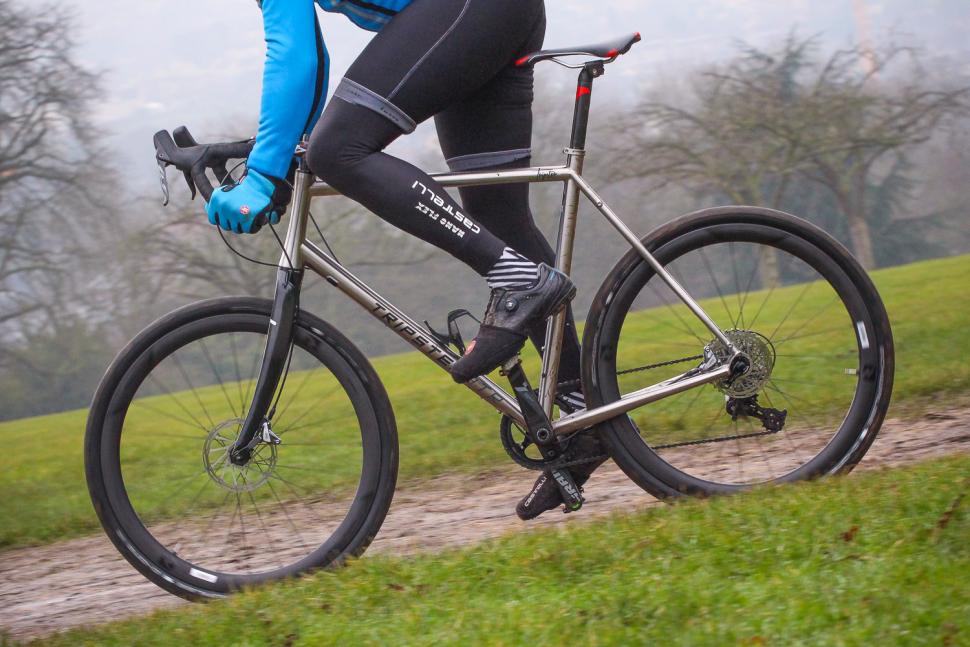
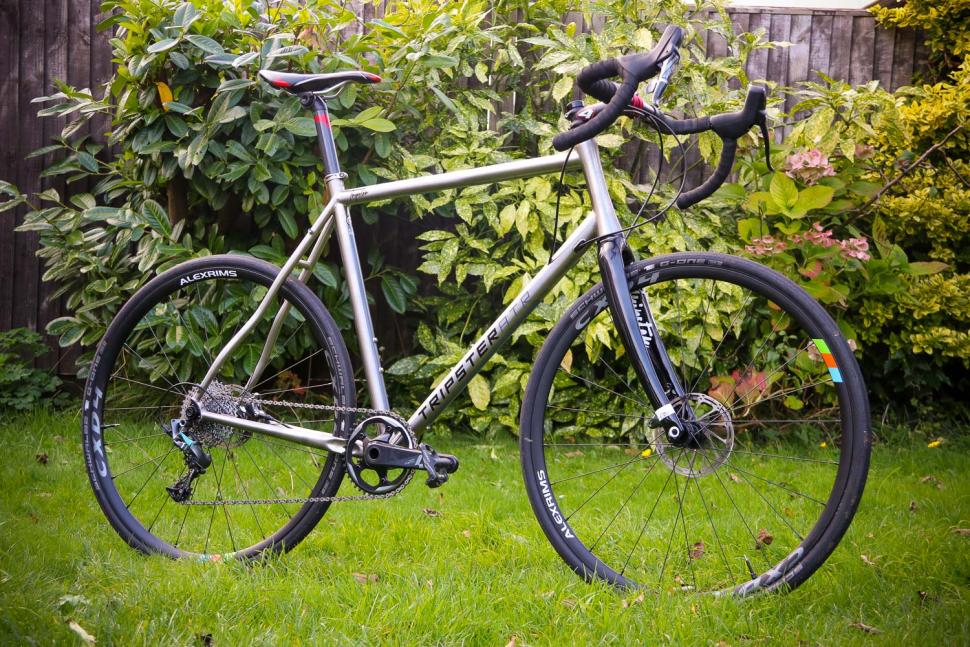

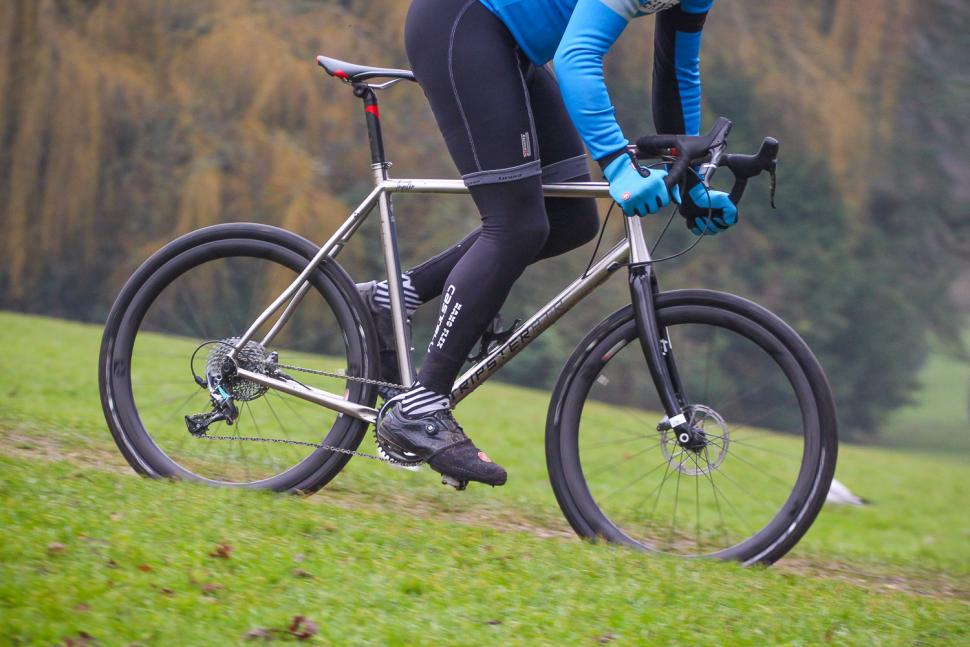

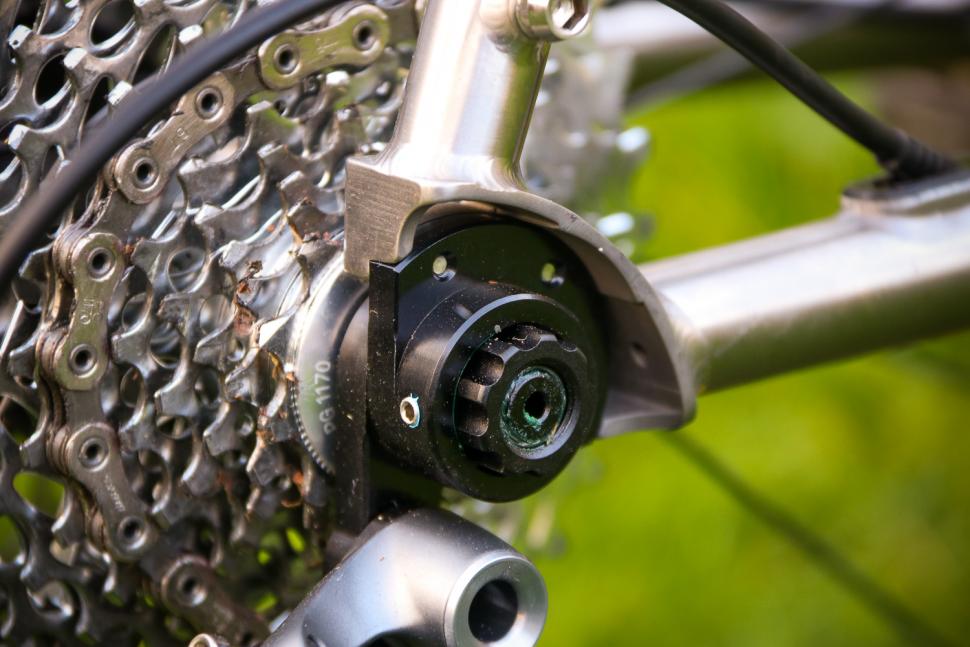
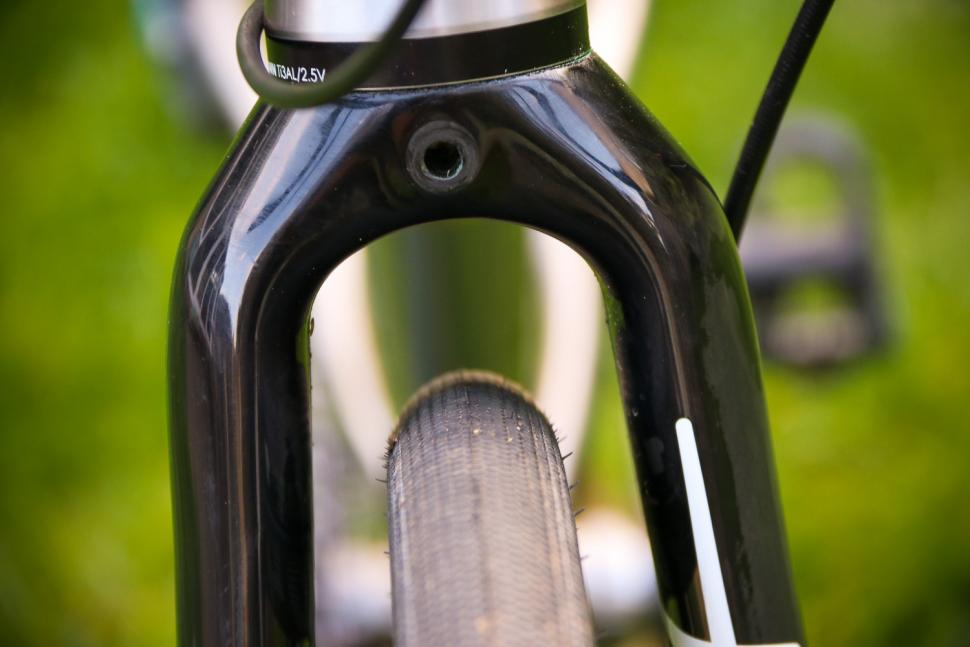
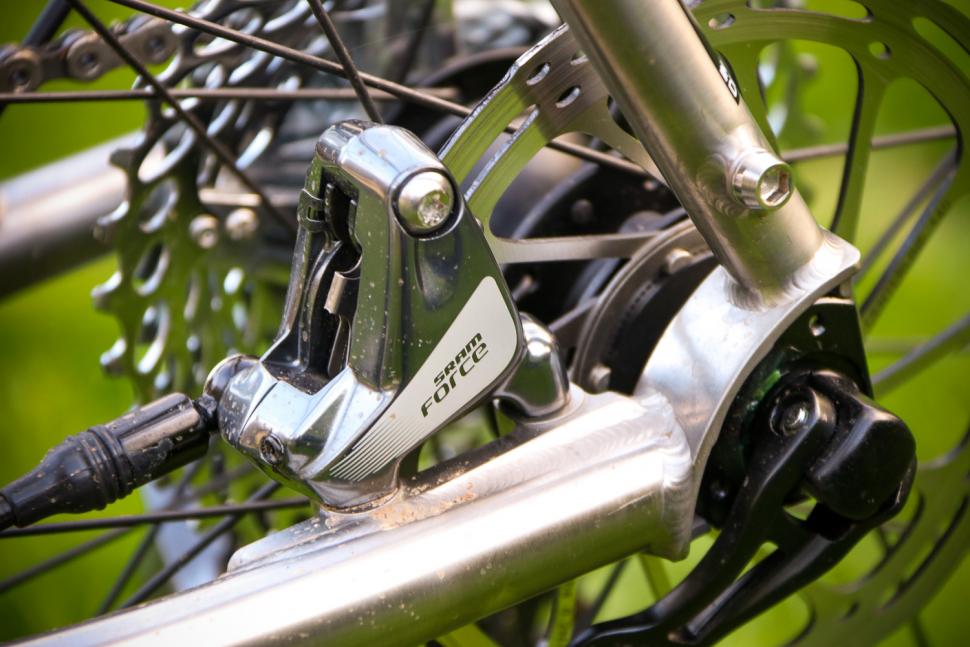

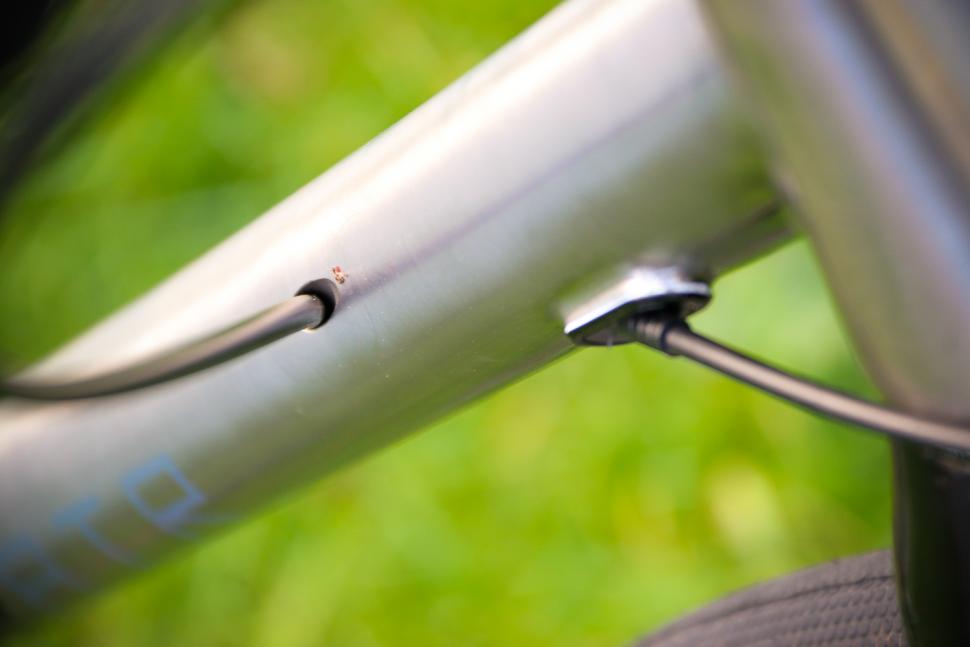




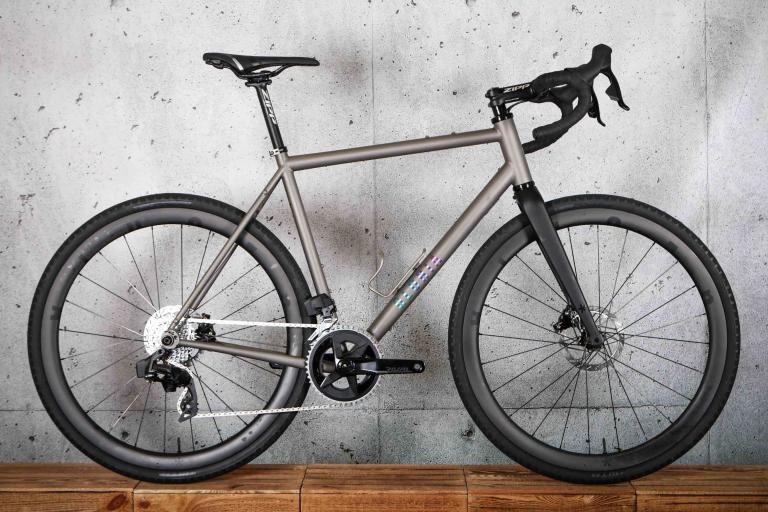
Add new comment
18 comments
How would you rate it up against a REILLY SPECTRE//ROAD DISC 325Ti, I know you get greater tyre clearance on the Kinesis Tripster ATR ??
Looks lovely, but made me think: Don't throw away your old 26 MTB wheels yet kids....MTB choice now includes bigger wheels(from 26 >650b > 29 > 29+ >fat)..."road" bikes are now giving options for smaller wheels....(700>650>??)
Therefore I think the idea of N+1 is dead for the average person who doesn't race but likes to just ride wherever they can: all they need is a frame along the lines of this and 3 sets of wheels:
First manufacturer to provide this package at a reasonable price can send me a free one to say thanks for the idea.
Although you might want...
...a clunker for the pub.
...a singlespeed so they can buy coffee from hipster baristas without embarrasment.
...a tandem for romantic breaks away.
...and...
I use my V2 Tripster for sportive, mountain climbing, club runs, training rides. Its so comfy to use. I built mine with Di2 XT groupset. I run 3 sets of wheels 25 mm with 60mm aero, 28mm hunt and 40mm hunt wheels.
Hi CXR94Di2, I've been following your build via your various comments over the past year and find it very interesting. I have number of questions I'd like to ask about it if you don't mind. Do you have a blog on your build or a prefered way to chat? I can just ask through the comment section here if you prefer.
Thanks
Just spotted this, I'm happy to comment on any aspect, to ask away.
The only thing that wasn't perfect about my V1 was the fork. Kinesis have addressed the issue by doing-away with that component.
I built my Tripster up in January last year as my winter/soft roader, full mudguards, 700c x 38 G-One's and an ultra wide gearing setup for 48-32 crank and 11-40 cassette which sees me up just about any climb, traction allowing.
The first major test was the South Downs Cycleway which was amazing and whilst it shook me to pieces the Tripster was a dream. A few thousand miles later and it's my go to bike when the weather is nasty, always quick and always reliable.
A little on the heavy side at 11+ Kg when all set for the dirt that's why I have the Gran Fondo for summer, stripped to the bone at 8.5, not that you notice under 10 kg of thermals.
The internal cables are really not a big deal I used Jagwire's 'Road Elite Sealed Shift' which stops the crud doing it's worst. The shifting today is as good as it was when fitted 12 months ago.
Top marks to Kinesis, It's going to be sometime before I see a better design do it all.
no, they're not a big deal and i didn't mark the bike down for the routing, it's not like it's the only adventure bike with internal cables. it's more a personal preference, really.
the bike as built in the riding pics is under 10kg. i've had the V1 bike as low as 9kg depending on the build
Lovely frame, looks far to tall at the front for me...and cyclists.
Yes, kinda true that - not a racing position at all. Initially I struggled with this and wondered why the top tube wasn't 2-3cm shorter, but set up as a multi-day mile-muncher (ideally with tribars in TCR mode) then the height makes more sense. The reality for even young (!) people on that kind of ride is bars set within an inch of seat height and the ATR works well in that mode giving you 'gravel' stance or cruising stance plus a more focused and stretched aero postion. Having said that Mason's newer bikes do have a shorter headtube across the board. For an all-round or hard-out bike if, like me, you have slightly shorter legs and lorger torso than average, this won't work without going down a size and using a looooong stem.... for that kind of riding I would think the disc GF ti would be awesome. Actually I would love to own the GF as well - that would cover all of my road to gravel/tour needs as I don't race.
if you think it's too tall for you, probably best not to get one. the position works really well for long distance and multi-terrain riding though
What, like form following function? Who'd have thunk it?
<leaves scene on Raleigh Chopper>
Dave, other than cable routing how does the ATR V2 compare with the 4.5 star Enigma Escape (which has similar clearance and stack/reach ratio, and I’m guessing is a bit lighter)?
i haven't ridden the escape but jim really liked it when he reviewed it, and yes it's a similar beast. the tyre clearance isn't quite as generous, but the geometry is very similar. the enigma uses the cable routing that i think works best for a bike like this: full outers, externally routed. As to whether it's a better ride, i'm afraid i can't say!
OK thanks. On the verge of upgrading my CDF with something that could handle SRMR as well as TCR. This looks like one of the few bikes that could work.
Frame is available from multiple sources @£1650. Depending whether you go with thru forks or QR they cost as little as £150. So like my purchase it cost £1800 for whole bike+ cost of QR dropouts on the rear
When deciding what bike to do London-Edinburgh-London on I had to decide between a Datum and the ATR V1. Datum a little racier but when I thought about day 3 and 4 and riding through the night in a sleep-deprived state the ATR won and was an excellent companion. The most comfortable bike I have ever ridden by a long way (and I am comparing to quality steel there) and also very stable indeed. I have ridden every Audux distance on it, used it as a posh comutter and canal path basher. Def losses half a klik of cruising speed over the carbon bike but I suspect that is mostly wheels. I think of it as a Dawes Galaxy that you actually want to ride - somehow manages to get the stability right without being utterly boring. Getting kinda spendy now though, but as a base for something serious like a TCR or more the c-road end of bikepacky it would be hard to see how you could go wrong.